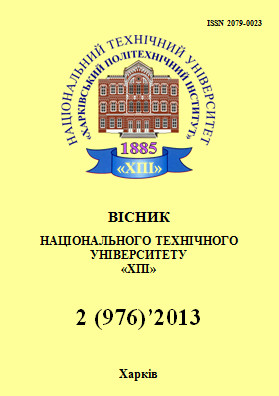Задачи бюджетирования в управлении финансовой деятельностью предприятия
DOI:
https://doi.org/10.20998/%25xAbstract
В данной работе рассматривается процесс формирования и движения материальных и соответствующих денежных потоков на предприятии. Основу плана предприятия составляет портфель заказов (ПЗ), сформированный на планируемый период. На основании сформированного портфеля заказов и плана будущей деятельности предприятия формируется постановка задачи бюджетирования.References
Табурчак П. П. Планирование деятельности предприятия / П. П. Табурчак. – СПб. : Химия, 1997. – 364 с.
Феофанов А. Н. Планирование многономенклатурного машиностроительного предприятия / А. Н. Феофанов, Ю. А. Милкина // Экономика и управление в машиностроении. – 2011. – №1. – С. 5–7.
Щиборщ К. В. Бюджетное планирование деятельности промышленного предприятия / К. В. Щиборщ // Аудитор. – 2003. – № 3. – С. 22–23.
Щиборщ К. В. Бюджетное планирование деятельности промышленного предприятия / К. В. Щиборщ // Аудитор. – 2003. – № 4. – С. 42–46.
Downloads
Published
2012-12-21
How to Cite
Терещук, И. В. (2012). Задачи бюджетирования в управлении финансовой деятельностью предприятия. Bulletin of National Technical University "KhPI". Series: System Analysis, Control and Information Technologies, (2(976), 149–158. https://doi.org/10.20998/%x
Issue
Section
SYSTEM ANALYSIS AND DECISION-MAKING THEORY
License
Copyright (c) 2015 Вестник Национального технического университета "ХПИ". Серия: Системный анализ, управление и информационные технологииAuthors who publish with this journal agree to the following terms:
- Authors retain copyright and grant the journal right of first publication with the work simultaneously licensed under a Creative Commons Attribution License that allows others to share the work with an acknowledgement of the work's authorship and initial publication in this journal.
- Authors are able to enter into separate, additional contractual arrangements for the non-exclusive distribution of the journal's published version of the work (e.g., post it to an institutional repository or publish it in a book), with an acknowledgement of its initial publication in this journal.
- Authors are permitted and encouraged to post their work online (e.g., in institutional repositories or on their website) prior to and during the submission process, as it can lead to productive exchanges, as well as earlier and greater citation of published work (See The Effect of Open Access).


